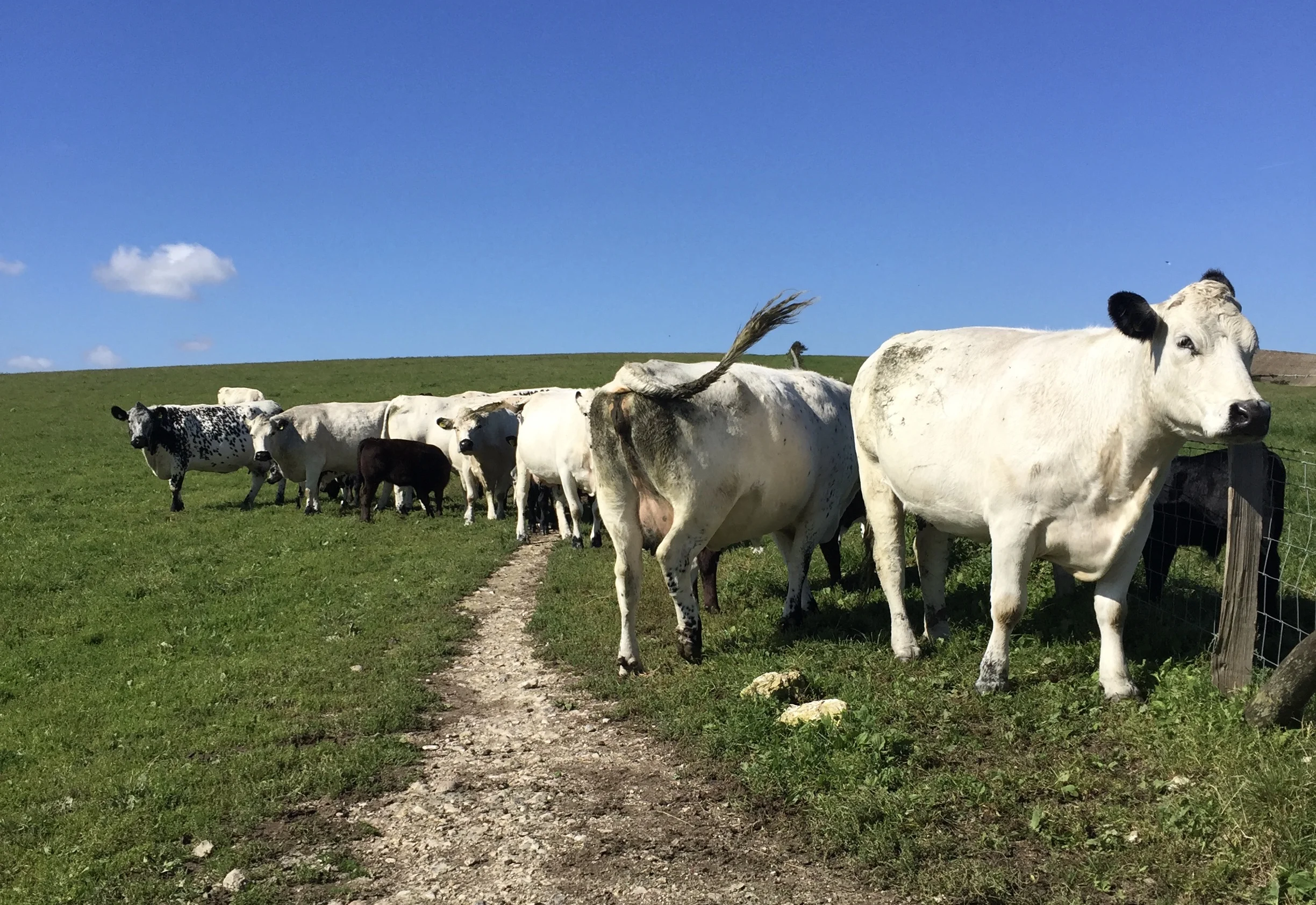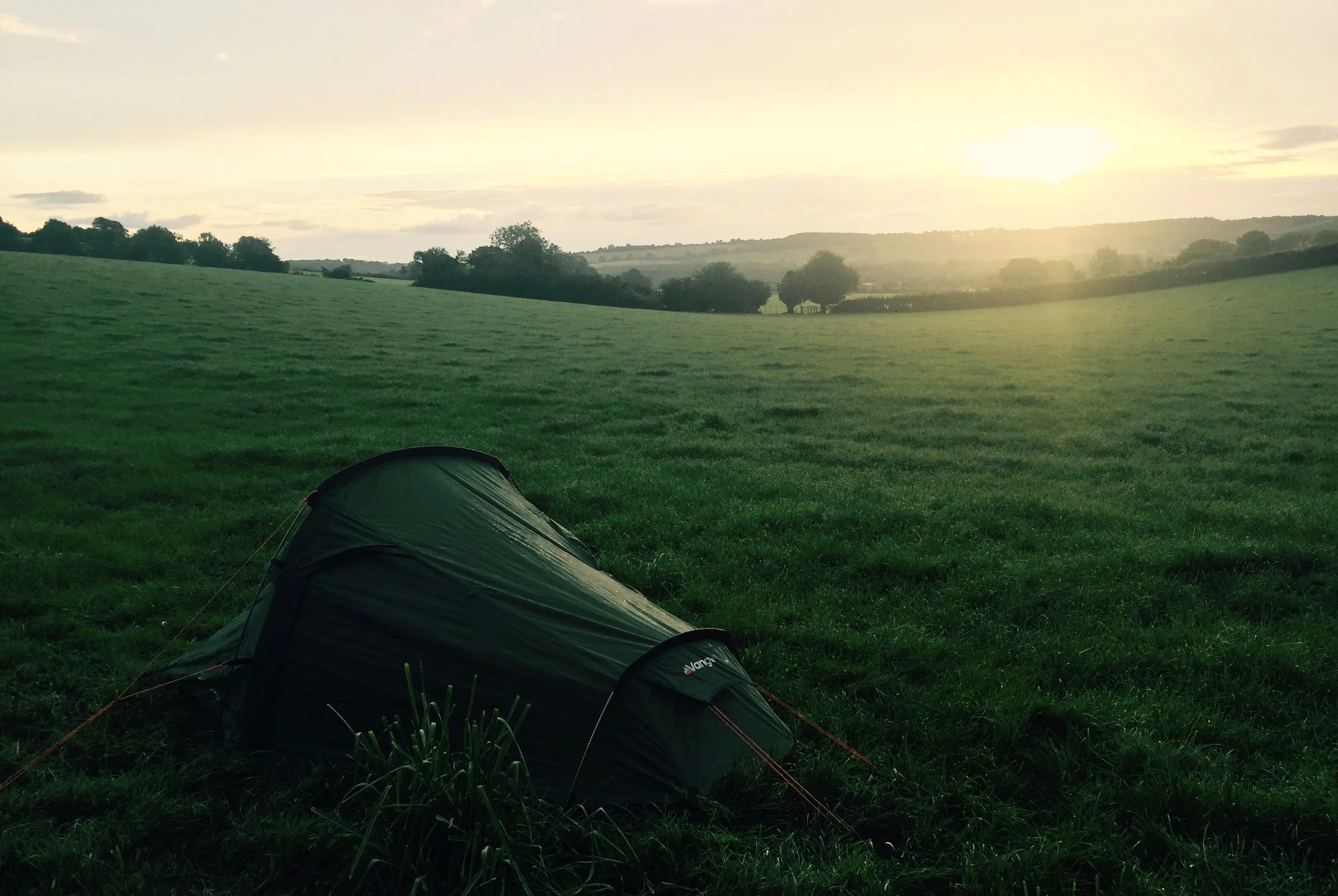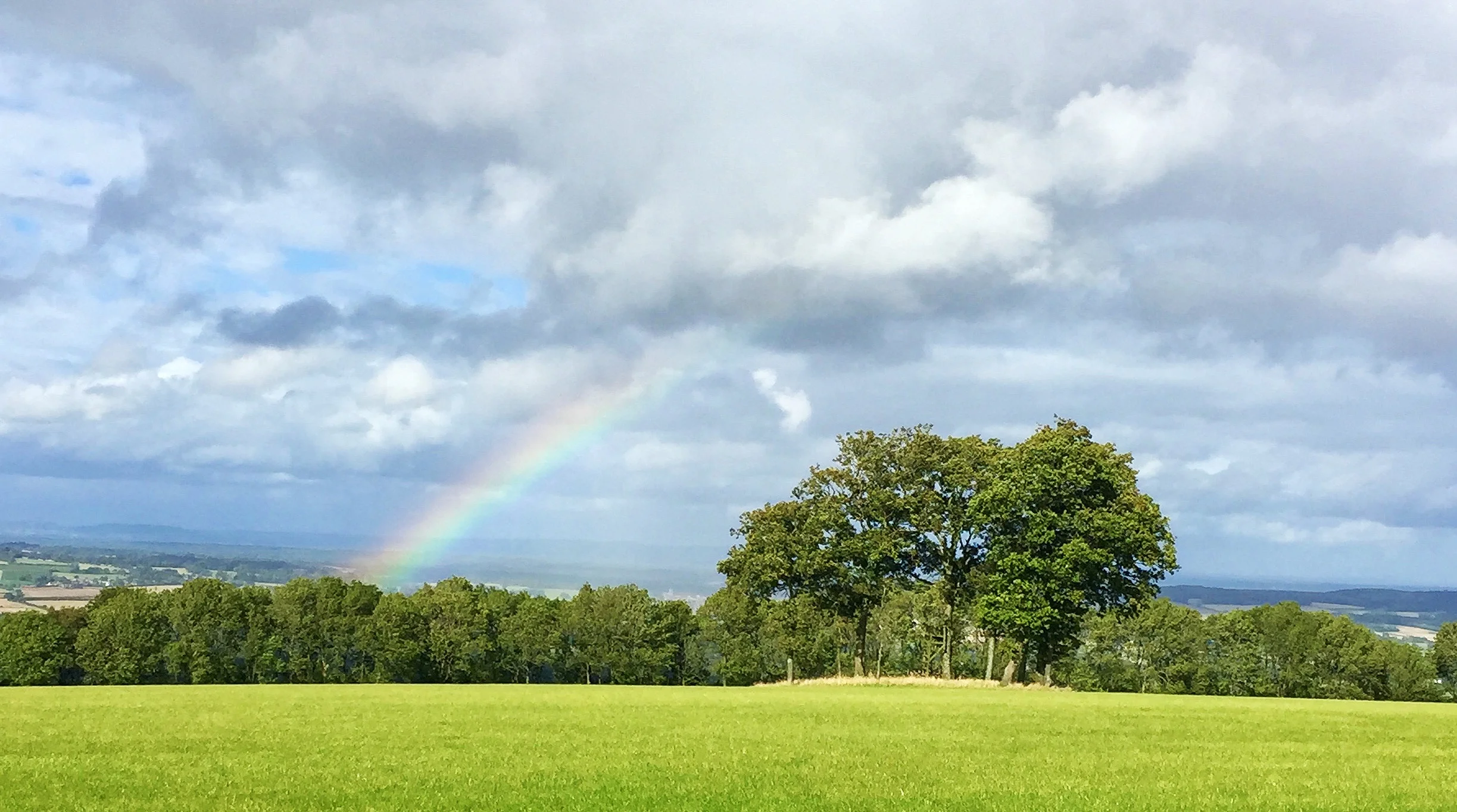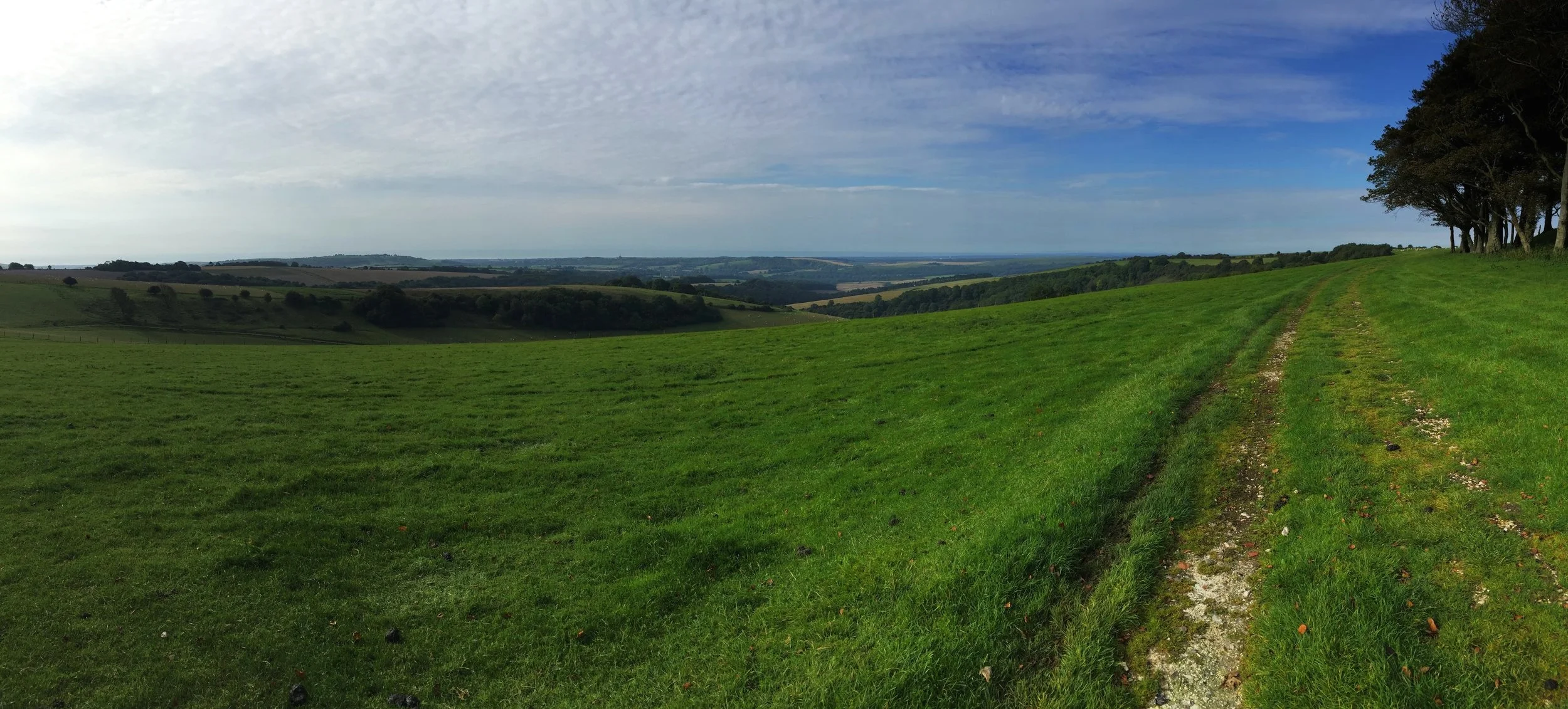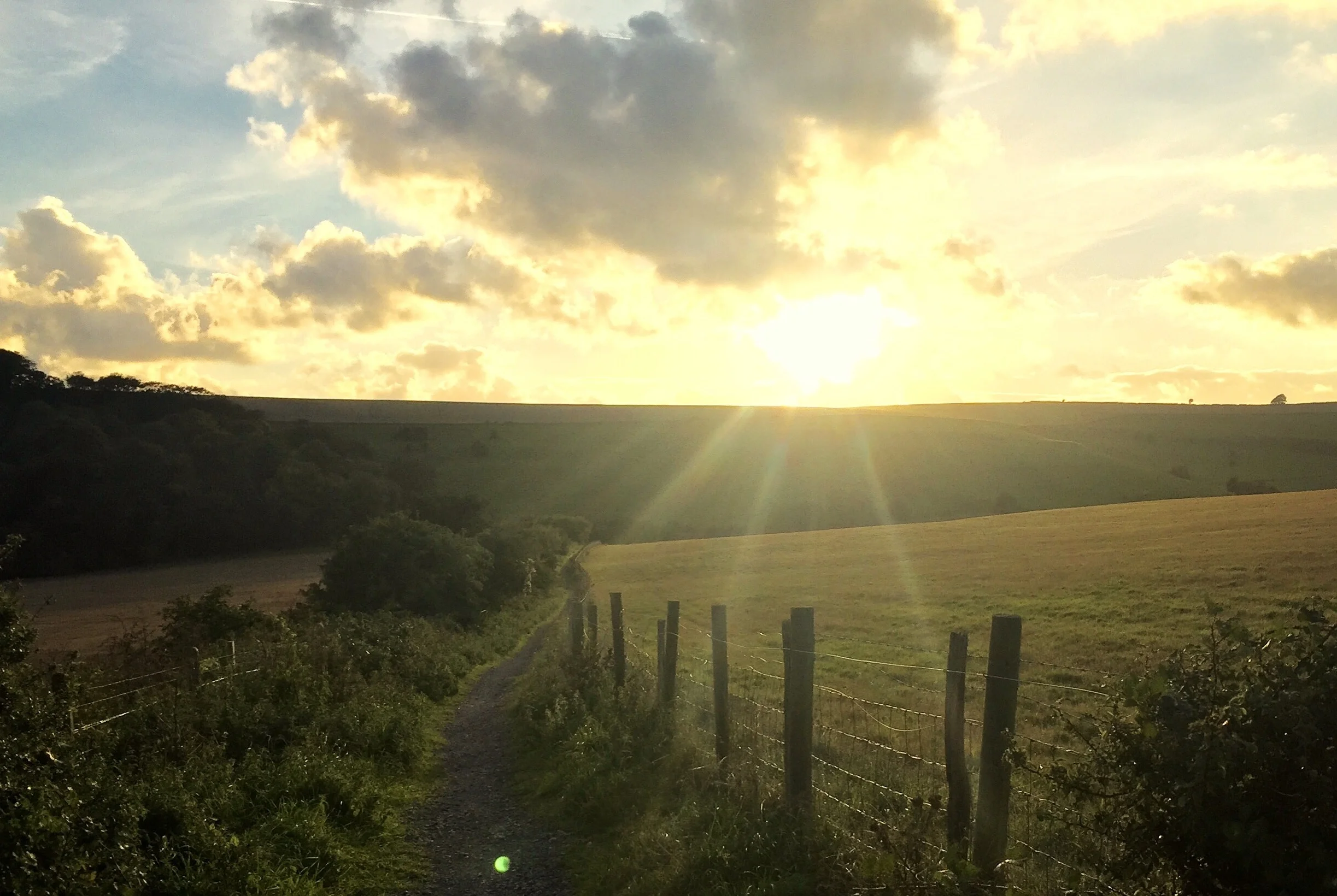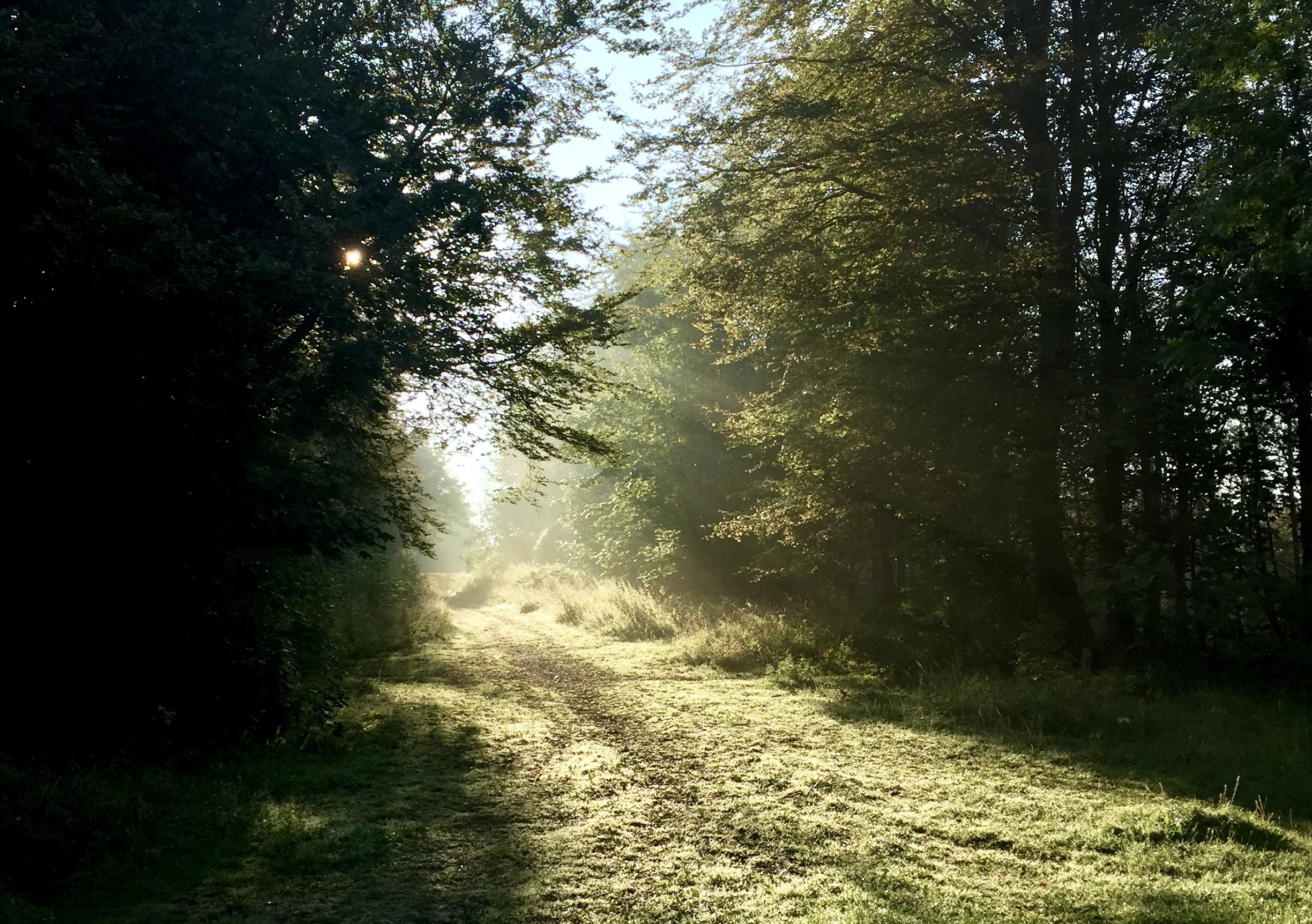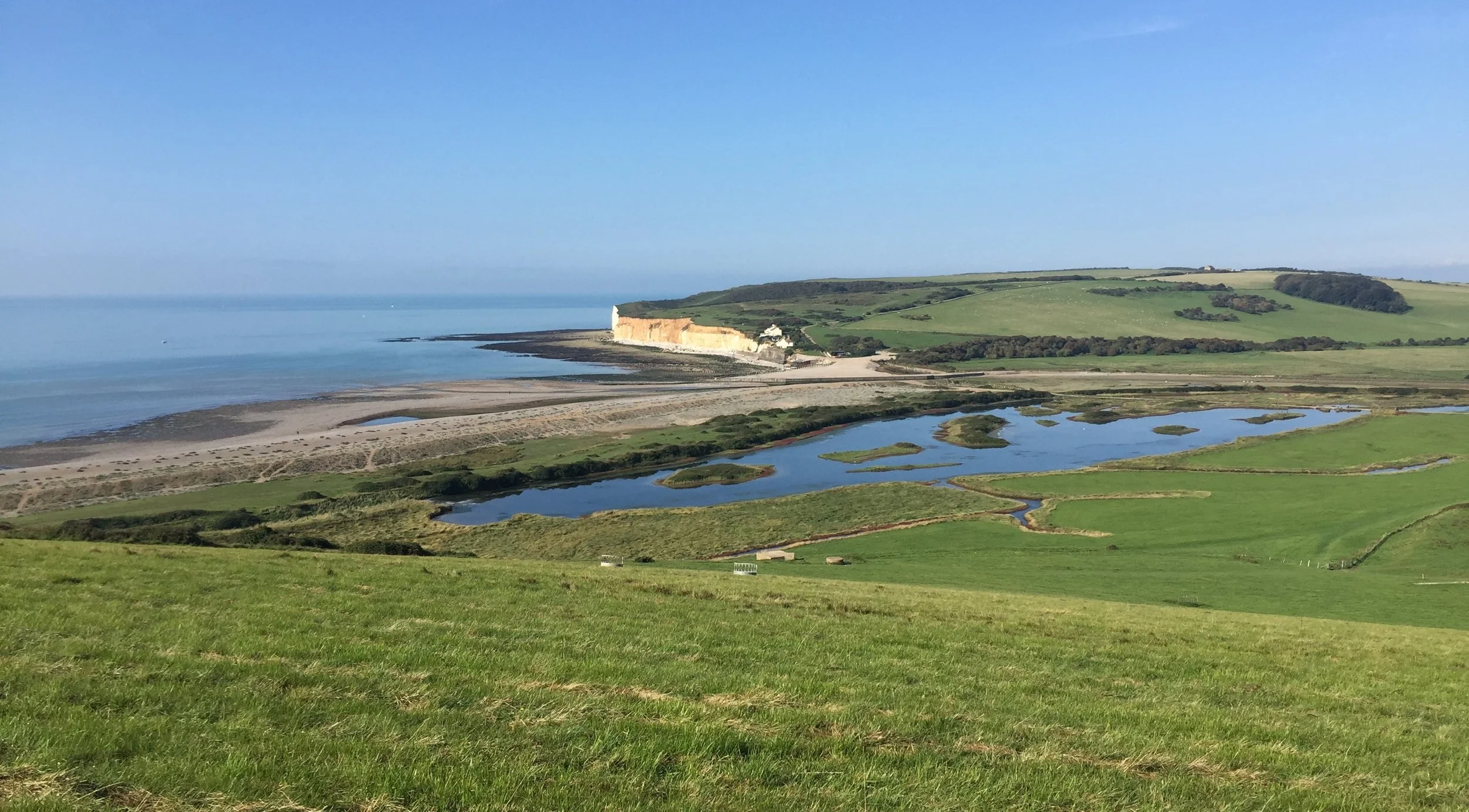Walking 100 miles along the South Downs Way, a route across the chalklands from Winchester Cathedral to Eastbourne seafront
Route: South Downs Way from Winchester, Hampshire to Eastbourne, East Sussex
Date hiked: September 2015
Number of days: 9 (including 2 rest days)
Distance: 100 miles
My first day on the South Downs Way, a 100-mile route along the chalky tracks and ancient droveways of rural Sussex, did not set the tone for the rest of the hike. It was gloriously sunny and warm, drama-free and relatively flat, which meant I was able to cover 10 miles in a cool four hours – including stops for sunbathing and snacks.
Actually, the hardest thing about day one was finding the start. Beginning at the exact point might not matter to a lot of people but it does to me, so I did a few turns around the gothic Winchester Cathedral – one of the largest in Europe – trying to find a sign. No sign of a sign. I traced the red line on my Harveys map and eventually found a waymarker on a footpath beside the M3, showing 99 miles to Eastbourne. I was on the right track.
Sunrise in the Meon Valley
By the evening I’d walked into the South Downs proper. I wound my way down from the nature reserve at Beacon Hill just as the sun was setting and pitched my tent, whose name is Willow, among cow pats in the Meon Valley. I did this with some trepidation – cows don’t make good campmates – but I was tired and the pats were dry, so I reasoned the cows had long been herded elsewhere. At 3am when I heard a moo, I remained optimistic: I’d imagined it.
When the mooing got louder it dawned on me that I was, without doubt, in a field of cows and they were getting closer. It was a tense few hours, listening to their terrible noises as I waited for morning. I’ve since heard stories about cows surrounding poor campers’ tents and nudging or rubbing up against them. Thankfully they had no interest in me and Willow, but nethertheless I got the hell out of that cattlefield the second the sun rose.
Meon Springs to Washington
The next two days on the South Downs Way tested me. Challenges came in the form of unceasing rain, a lack of sleep, some steep sections on Salt Hill and Sutton Down, long daily mileage and too many damn cows blocking my path. I lost my way a couple of times, too – once by passing Garston Farm instead of taking the right-hand track to Coombe Cross, another in the maze of trails in the 1,400-acre Queen Elizabeth Country Park.
I hear Harting Down is beautiful, with its wildflowers, scrub and dramatic views over the chalk valleys, but heavy mist and a relentless downpour put a literal damper on it. Sheltering under a dense tree canopy to make porridge and coffee – the first proper fuel I’d had since breaking camp two hours before – I found myself wondering if I’d ever do this again. This was my first solo long-distance hike, and maybe it would be my last.
The winds were also picking up. Trekking across the open fields near South Harting, I was blown off kilter a couple of times and a gust took my map right out of my hand. I scrambled across sharply cut crops to get it back, then sat down for a while when I noticed I had a rare window of mobile data. Quick Instagram post, a call to Mum, a few texts to mates. I’m OK. Everything going to plan.
The upside of the strong winds was that the weather frequently broke. Those moments were glorious. On the vast flat, grassy fields at Manorfarm Down just past Cocking, I sat among a hundred fat slugs and picnicked on quick-cook pasta and sundried tomatoes as a rainbow painted its strokes across the sky. On Amberley Mount the following day, I sat with a cinnamon tea and took in the archetypal pastoral English scene.
A rare break in the clouds at Manordown Farm near Cocking
I spent that night, my third night, at the National Trust-run Gumber Bothy, about a mile off trail and absolutely worth the detour in the circumstances. Winds ripped through the eaves all night as thunder crashed and rain hammered on the roof. I think some pigs were trying to break through the door in the early hours, but I could have dreamed that.
I had company in the bothy: Steve, whom I’d met earlier that day while I was taking a break next to a sheep trough. Both of us waterproofed head to toe, we ate a soggy lunch in the driving rain while he told me about his love for walking in the Lakes. The South Downs Way, it turned out, was his first hike by himself and he wasn’t enjoying the solitude as much as he’d hoped. To be fair, the weather wasn’t making it easy for us.
Not long after setting off from the bothy the next day, I “had a fall”. I say that rather than “fell over” because it describes the shock and event of it, in the same way that old people “have falls”. The long days of rain had made the chalk paths sneakily slippery, like black ice. I went flying off the path on my way down from the 226m Bignor Hill and landed fortuitously in a pillow of tufty grass. Right on cue, after having seen no one that day, some handsome cyclists swung by just as I was disentangling myself from the nettles with my pack skewiff and hair wild. I willed them to cycle on, but of course they didn’t and stopped to check I was OK. Just a few bruises and stings, totally fine, totally fine.
Washington to Housedean Farm
I booked myself into Washington Campsite for the next two nights to give myself a rest day. The shower block with its hot-air heaters was a godsend. The second night there was an almighty lightning storm and a jolly couple called Basil and Jilly hollered across the campsite, inviting me into their motorhome for wine and shelter. I got tipsy as they told me stories about the haunted Chanctonbury Ring, which I’d be hitting the next day.
Chanctonbury Ring is the site of an Iron Age hill fort, a large grassy mound crested by a cluster of beech trees – some ancient, some young – and from which, on a clear day, you can see for miles. For centuries it’s also been a hub of mystical derring-do, with sightings of everything from fairies and ghosts to UFOs and the devil himself – who, legend has it, can be summoned by running around the ring seven times. Crazy people stay overnight here for the thrill of it. One of the most common reports is of the ghostly sound of a woman wailing, and there are countless instances of people feeling unnerved by a powerful sense of discomfort, of being followed, of an evil presence.
Circling the ‘haunted’ Chanctonbury Ring
When I took the ridgeway across Chanctonbury Ring, it wasn’t spooky. At just gone 10am, the low autumn sun cast a warm light over the mound, the grass a brilliant green, the beech trees almost black and the chalky path bright and inviting. I was a little disappointed; perhaps my experience would have been altogether different 12 hours earlier.
My umpteenth change of plan so far was to walk the 22 miles from Washington Campsite to the Housedean Farm campsite just west of Lewes. The idea was to cover two days in one to avoid walking in the lightning storms that were forecast once again the next day. This goal was ambitious, especially as I left camp an hour off schedule.
It was a hot, sunny whistlestop tour of Chanctonbury, Fulking Hill, the spectacular mile-long dry valley of Devil’s Dyke, Ditchling Beacon and the postcard-pretty Jack and Jill windmills. I barely stopped, only resting briefly at the Truleigh Hill youth hostel where I necked a coffee and ate a Feast. Keeping a cursory log of the gorgeous scenery, I powered on to reach the campsite before dark.
The descent down Long Hill to Housedean Farm
It was brutal. I managed it in exactly 10 hours, arriving just as the sun set. Towards the end, when I picked up the pace, I was hiking at just over 4mph. I tried to channel the old man I’d met earlier: he was in his 80s and effortlessly running reps up the 169m Beeding Hill while I was chugging up at a fraction of the speed. He told me how, a decade before, he’d joined a six-strong relay team and ran the South Downs Way in 12:40 hours. He also said he was humbled by my endeavour. Even though he was the real hero here, I fed off this for the rest of the brutal day – a pat on the back from an intrepid octogenarian goes a long way.
Safely at the campsite, I pitched close to a larger tent further up the hill, hoping that if lightning struck tonight, it got them and not me. It’s every woman for herself out there. Then I ate two dinners. It thundered and rained all night and the next day, my day off, so I wandered into Lewes, to the delightful Flint Owl Bakery, where I ate two lunches because suddenly one meal is not enough.
Housedean Farm to Friston Forest
My penultimate day was a stunner. Fierce sunshine, blue skies, mostly along a ridgeway with sweeping views inland to my left and the glittering English Channel to my right. Descending into Alfriston, I swung by the village campsite and walked straight out: a Saturday night, it was full of gangs of teenagers chugging back tinnies and snogging each other. I wasn’t quite ready for the real world.
I bought a slice of chocolate fudge cake from a tea shop and carried on as the path meandered along the Cuckmere river out of the village. After a couple of miles, I spotted a nice patch of ground just short of Friston Forest. It was tucked at the bottom of a field of crops so I was technically trespassing, but the sun had just set and I resolved to leave at dawn so nobody noticed.
My punishment for jumping the farmer’s fence? At 10pm I was disturbed by a flash of light. Someone shining a torch at my tent? I nervously looked outside. A combine-harvester was working the field next to mine and its headlights were beaming in my direction. I now know it’s common for farmers to work after dark, but at the time nothing seemed more unlikely. I watched it move from field to field until all of a sudden, it was monstering down the hill directly towards me, hacking at everything in its path. I jumped out in my pyjamas, wildly waving my headtorch in one hand and my phone light in the other. I’m here, I’m here! Please don’t mow me down! It slowed, stopping just short of the edge of the crops, paused and turned to continue back up the hill leaving me and Willow in one piece.
The morning sun shining through the beech trees in Friston Forest
At the very first light, I packed up quicker than you can say “harvest supper” and hopped back over the fence to climb the steps into Friston Forest. Turning back, I saw a quad bike making a beeline for my pitch; I must have narrowly missed a telling-off. Thank god. I hate being told I’ve done something wrong.
I realised that in my haste I’d put my trousers on inside-out. I clumsily pulled them off, balancing to keep off the mud, when a couple rounded the corner with their dog. People keep really strange hours round here. They pretended not to notice me, which was kind of them, and I put my trousers back on, sat on a bin liner and tried to eat my porridge with some dignity.
The Cuckmere Valley and Seven Sisters
The woods were gorgeous that morning. Sunlight streamed between the beech trunks and the dewy air smelt earthy and fresh. Leaving the trees, I began the rise and fall of Exceat Hill, rejoining the river where it flows into the sea.
Cuckmere Haven in the Seven Sisters Country Park
It’s a terrific view, and I lounged against my pack and read a book in the sun for an hour or so before tackling the quad-busting Seven Sisters. With a total ascent of 800m, these beasts are relentless: down, up again, repeat. The payoffs are sensational views of the chalk cliffs and ice-cold beer at the cafe at Birling Gap. Then it’s an easy saunter along the clifftop to Beachy Head with its iconic lighthouse before a gentle slope down to Eastbourne, where you’re greeted with an end marker that doesn’t really cut the mustard in terms of fanfare. Perhaps most hikers are modest about their conquests, but I wouldn’t have minded a sign worthy of a selfie.
As I made my way along Eastbourne seafront, I thought back to Kithurst Hill when a truck of three men, all holding guns, approached me from behind. I didn’t hear them until the last minute because I was walking upwind. They drove alongside me, giving me a fright, and one of them called, “You have a baby in there?” gesturing at my pack. What? No. And if I had stuffed a baby in my bag, I’d probably want to keep it a secret. They continued their special line of questioning: “Are you American? No? You have a strange accent. You’re not from round here.” And with that they sped off. I’m really not from round here.
This is the thing: the South Downs Way was as much about the landscape as it was the people. While there were many moments of peaceful solitude, it’s generally busy, being mostly along bridleways and within close reach of London. But this was to its credit. Everyone I met was interesting, interested, entertainingly weird (I’m looking at you, farmers) or just plain lovely. Especially the couple who caught me hopping around in my knickers.

